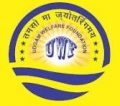Grade 12 CBSE Mathematics Resources
Master concepts through case studies, video tutorials, and online tests
Chapter 1: Relations and Functions
This chapter introduces different types of relations and functions, including empty, reflexive, symmetric, and transitive relations. You’ll learn about one-one, onto, and bijective functions, along with binary operations.
Key Concepts: Types of relations, composition of functions, invertible functions, binary operations.
Chapter 2: Inverse Trigonometric Functions
Inverse trigonometric functions are fundamental in calculus and have wide applications. This chapter covers their principal value branches, properties, and graphs.
Key Concepts: Principal value branches, properties of inverse trigonometric functions, graphs, elementary properties.
Chapter 3: Matrices
Matrices are powerful mathematical tools used in various fields. This chapter covers different types of matrices, operations on matrices, and finding inverses.
Key Concepts: Matrix operations, transpose, inverse using adjoint, elementary transformations.
Chapter 4: Determinants
Determinants provide important information about matrices and linear systems. This chapter explores properties of determinants, their applications in finding areas, and solving systems of linear equations.
Key Concepts: Properties of determinants, minors and cofactors, adjoint and inverse, area of triangles.
Chapter 5: Continuity and Differentiability
This fundamental calculus chapter explores the concepts of continuity and differentiability. You’ll learn various differentiation techniques including chain rule, implicit differentiation, and logarithmic differentiation.
Key Concepts: Continuity at a point, differentiability, derivatives of composite/inverse functions, logarithmic differentiation.
Chapter 6: Applications of Derivatives
This chapter explores practical applications of derivatives in various fields. You’ll learn to determine rates of change, find tangents and normals to curves, approximate values, and solve optimization problems.
Key Concepts: Rate measurement, increasing/decreasing functions, tangents/normals, approximations, maxima/minima.
Chapter 7: Integrals
Integration is the inverse process of differentiation. This chapter covers various methods of integration including substitution, partial fractions, and integration by parts.
Key Concepts: Indefinite integrals, integration techniques, definite integrals, fundamental theorem of calculus.
Chapter 7 (a) : Definite Integrals
Integration is the reverse of differentiation and is used to find areas under curves. In this section, we focus on definite integrals, which calculate the exact area between a curve and the x-axis over a specific interval.
Key Concepts: Definite integrals, limits of integration, area under a curve, and the Fundamental Theorem of Calculus.
Chapter 8: Applications of Integrals
This chapter demonstrates how integration can be used to calculate areas under curves and between curves. You’ll learn to find areas bounded by lines, parabolas, circles, and other common curves.
Key Concepts: Area under simple curves, area between two curves, practical applications.
Chapter 9: Differential Equations
Differential equations model numerous real-world phenomena. This chapter introduces basic concepts of differential equations, their formation, and solution methods including variable separable and homogeneous techniques.
Key Concepts: Order and degree, general and particular solutions, formation, solution methods.
Chapter 10: Vector Algebra
Vectors are quantities having both magnitude and direction. This chapter covers vector operations, dot and cross products, and their geometric interpretations.
Key Concepts: Vector operations, dot product, cross product, scalar triple product.
Chapter 11: Three Dimensional Geometry
This chapter extends coordinate geometry to three dimensions. You’ll learn about direction cosines and ratios, equations of lines and planes, and how to calculate angles and distances between geometric elements in 3D space.
Key Concepts: Direction cosines/ratios, line equations, plane equations, angle between lines/planes.
Chapter 12: Linear Programming
Linear programming is a method to achieve the best outcome in mathematical models. This chapter covers problem formulation, graphical solution method, and identification of feasible and optimal solutions.
Key Concepts: Problem formulation, graphical method, feasible region, optimal solution.
Chapter 13: Probability
Probability quantifies uncertainty. This chapter covers conditional probability, multiplication theorem, independent events, Bayes’ theorem, and probability distributions of random variables.
Key Concepts: Conditional probability, multiplication theorem, independence, Bayes’ theorem, random variables.

